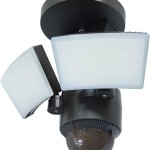How To Care For Outdoor Plants During Winter Season
Winter's harsh conditions, including freezing temperatures, snow, ice, and reduced sunlight, can significantly impact the health and survival of outdoor plants. Proper winter care is crucial for protecting them from damage and ensuring they thrive in the following spring.
One of the most critical aspects of winter plant care is providing protection from freezing temperatures. Prolonged exposure to sub-freezing temperatures can cause ice crystals to form within plant cells, leading to cell rupture and plant tissue damage. This damage can manifest as wilting, discoloration, and even plant death. Different plants exhibit varying degrees of cold hardiness, referring to their ability to withstand cold temperatures. Understanding a plant's cold hardiness zone is essential for determining the level of winter protection required.
Several methods can be employed to protect plants from the cold. One effective technique is applying mulch around the base of plants. Mulch acts as an insulating layer, moderating soil temperature fluctuations and protecting roots from extreme cold. Common mulch materials include shredded bark, straw, pine needles, and dried leaves. A layer of mulch several inches thick is generally recommended.
For more sensitive plants or during periods of extreme cold, covering plants can provide additional protection. This can involve using various materials such as burlap, blankets, or specialized plant covers. It's crucial to ensure the covering material is breathable to prevent the buildup of moisture and potential fungal growth. Remove coverings during milder days to allow for air circulation and sunlight exposure.
Watering practices should also be adjusted during the winter months. Overwatering can be detrimental to plants as it increases the risk of root rot and frost damage. Water plants deeply but less frequently than during the growing season. It's best to water on milder days and avoid watering frozen ground. Allowing the soil to dry slightly between waterings can help prevent problems.
Pruning, while typically associated with the growing season, can also be beneficial for certain plants during the winter. Removing dead, damaged, or diseased branches helps promote plant health and reduces the risk of pest and disease issues. However, it's important to research specific plant pruning requirements as some plants benefit from winter pruning while others do not.
Protecting plants from winter winds is another crucial aspect of winter care. Strong winds can desiccate plants, causing moisture loss through leaves and stems. Positioning plants in sheltered locations or using windbreaks can mitigate wind damage. Windbreaks can be constructed using various materials, such as fences, hedges, or burlap screens.
Evergreen plants, which retain their foliage throughout the winter, require specific attention. These plants continue to lose moisture through their leaves even during dormancy. Providing supplemental watering during periods of prolonged dry spells can help prevent winter desiccation. Applying an anti-desiccant spray to evergreen foliage can also reduce moisture loss and protect against winter burn.
Potted plants are particularly vulnerable to winter conditions as their roots are exposed to colder temperatures. Moving potted plants to a sheltered location, such as a garage, porch, or unheated greenhouse, can provide protection. Alternatively, grouping potted plants together and insulating them with mulch or bubble wrap can also help mitigate cold damage.
Preparing for winter well in advance is key to successful plant overwintering. This includes gradually reducing watering frequency in the fall, applying mulch before the first frost, and cleaning up fallen leaves and debris around plants to minimize pest and disease overwintering sites. Taking these preventative measures can significantly improve plant health and resilience during the challenging winter months.
Monitoring plants throughout the winter is crucial for identifying and addressing any potential problems promptly. Regularly inspect plants for signs of pests, diseases, or winter damage. Taking corrective action as needed, such as applying pest control or providing additional protection, can help prevent further damage and ensure plant survival.
Different plant species have unique winter care requirements. Researching the specific needs of each plant in your garden is essential for providing appropriate care. Consulting local gardening resources, such as nurseries or extension offices, can provide valuable information on regional best practices for winter plant care.
Proper winter care is an investment in the long-term health and beauty of your garden. By taking the necessary steps to protect your outdoor plants from winter's harsh conditions, you can ensure their survival and enjoy a vibrant and thriving garden in the spring.

How To Take Care Of Indoor Or Outdoor Plants In Winter Trustbasket

Practical Tips For Covering Plants In Winter Do I Need To Jay Scotts Collection

How To Keep Outdoor Potted Plants Alive In Winter Ryno Lawn Care Llc

5 Tips For Bringing Outdoor Plants Indoors The Winter Premier Tech Home And Garden

Winter Gardening How To Take Care Of Your Plants

How To Protect Potted Plants In Winter

5 Simple Steps For Preparing Gardens Winter Weather

Over The Garden Gate How To Care For Houseplants In Winter

How To Take Care Of Indoor Outdoor Plants In Winter Dubai Mybayut

Best Winter Plants For Pots Bbc Gardeners World
Related Posts







